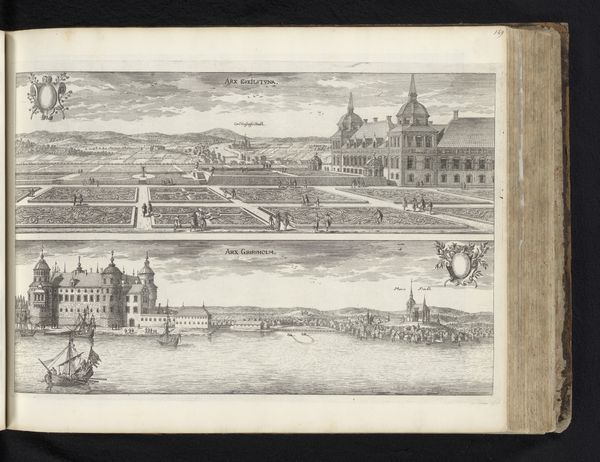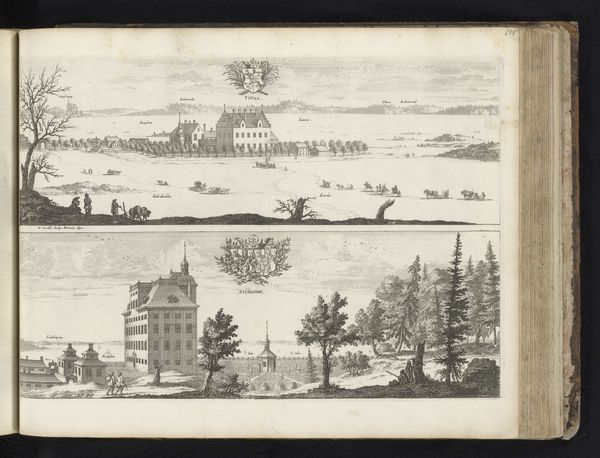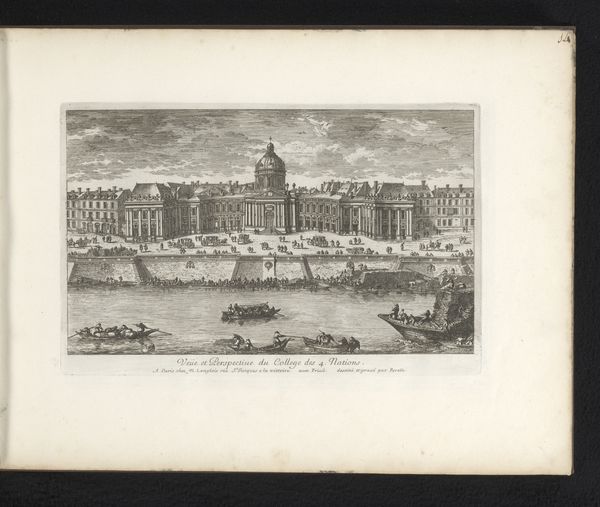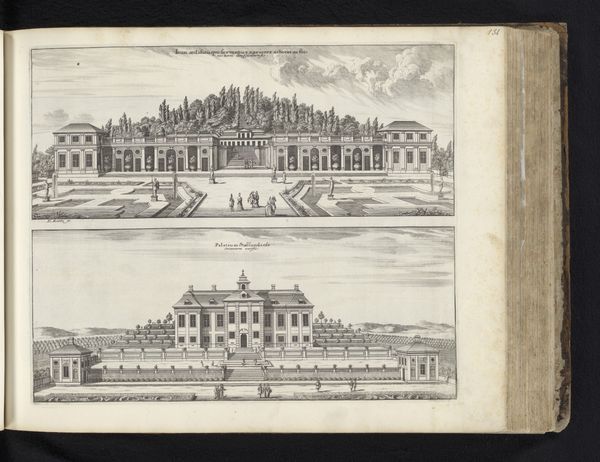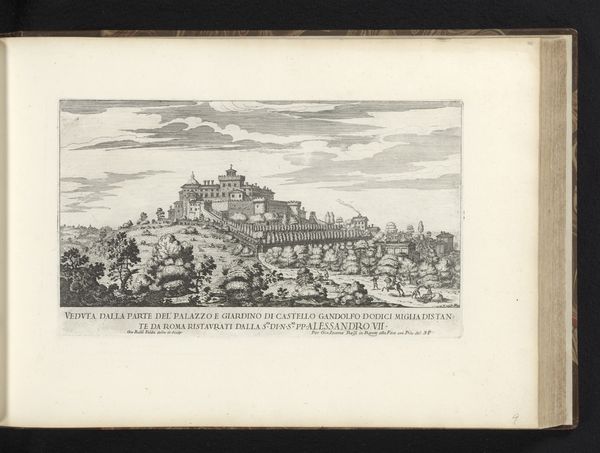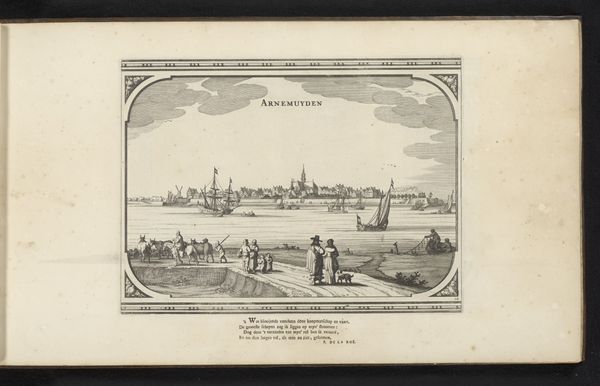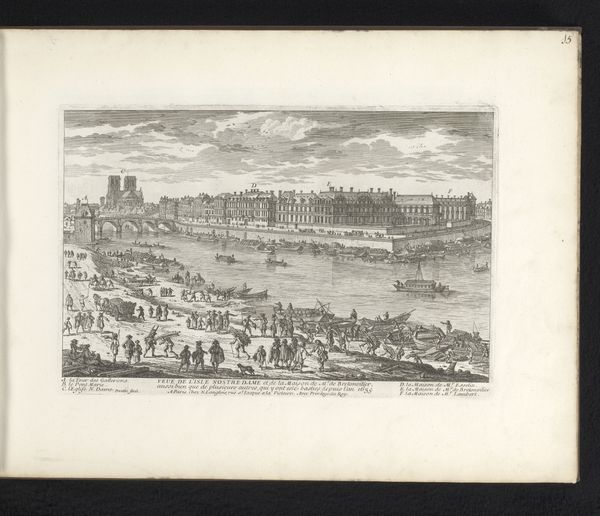
Fontein met een Triton en de rots van Andromeda in het park bij slot Ulriksdal 1668
0:00
0:00
adamperelle
Rijksmuseum
print, engraving
#
baroque
# print
#
landscape
#
history-painting
#
engraving
Dimensions: height 277 mm, width 343 mm
Copyright: Rijks Museum: Open Domain
Curator: Here we have a print dating back to 1668 by Adam Perelle, titled "Fountain with a Triton and the rock of Andromeda in the park at Ulriksdal Palace." It’s currently held at the Rijksmuseum. Editor: It has a surprisingly serene feeling to it. Even with all the minute detail—look at how delicate the line work is. Curator: It exemplifies Baroque aesthetics in its depiction of grandeur. This print served a vital function back then; it was documentation. These elaborate gardens reflected power and taste, demonstrating how royalty shaped and dominated both nature and the public's experience of it. Editor: Yes, but that dominance takes the form of very structured compositions. See the balance between architecture and landscape in the upper image, echoed by the layout of the park itself, mirrored in the lower part showing the "rock of Andromeda". Each element holds equal weight in the overall picture. Curator: Precisely. Places like Ulriksdal Palace were cultural stages. This image presents a narrative of Swedish power for the elites. Imagine how the experience would be curated for guests, even those less privileged; even they would find themselves controlled through structured spectacle. Editor: Even without knowing all that, you feel the artifice; nature doesn't create spaces this symmetrical or carefully composed. Look how each tiny figure is placed and arranged in small groups—they are small and uniform. The lines force us to absorb not just a view but an order imposed upon a chaotic world. Curator: Do you see any contemporary commentary? Probably not. But Adam Perelle has undoubtedly secured the king's desired message, contributing to the persona of an orderly and controlled kingdom. This type of engraving had its place in a much larger propaganda machine. Editor: Whether propaganda or not, it masterfully marries geometry with a certain romantic idea of the ideal landscape; everything has a precise place in this printed vision of Swedish paradise. Curator: When looking at an artwork such as this, consider its purpose. How were such images used and circulated and how does the very act of distributing visual representations of power affect culture and society? Editor: And while bearing in mind its purpose and message, it's fascinating to consider how formal aspects of the work impact our perception of the portrayed scenery and society in this place and time.
Comments
No comments
Be the first to comment and join the conversation on the ultimate creative platform.

